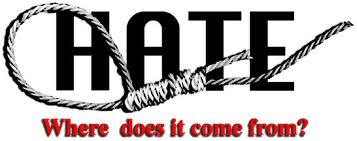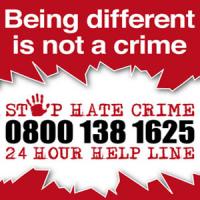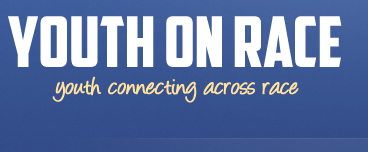
By Jodi Blankenship.

Hate Crimes target race, gender, religion, sexual orientation, and anything else that identifies a person as being different from his/her counterparts in the community. Photo Credit: kevpittwmp.wordpress.com
In the 1990’s, violence directed toward specific groups were identified as “hate crimes” and more stringent convictions were handed down. While crimes against minorities, different religious affiliations, and sexual orientation did not just suddenly appear in the late 20th century, the psychological damage for victims of this type of violence, one that focuses on someone’s identity, is one of the main reasons that led to the establishment of the hate crimes law. The American Psychological Association explains that hate crimes were perceived as having a broader impact on communities, and this violence, which is driven by prejudice, instituted the need for stricter penalties.
With the ultimate goal of decreasing violence directed toward another’s identity, these hate crimes are now tried as felonies to display to perpetrators that this violence is not acceptable. There are some who argue that the establishment of hate crimes actually triggers more racism. By identifying victims into groups based on their individual characteristics, hate crimes may isolate people rather than create communities where personal individualities are welcomed not chastised as motives to commit violence.
Andrew E. Taslitz, in the article Condemning the Racist Personality: Why the Critics of Hate Crimes Legislation Are Wrong, states that hate crime legislation enables members in groups, whether the group is derived from their race, gender, sexual orientation, or religion, as victimized or disadvantaged in regards to other groups. Each group feels they are being persecuted by another group which further divides the community.
Taslitz adds that, “hate crimes contribute to racist culture that creates subordinate status for marginalized groups and raises the risk of physical harm.” Hate crime legislation further ostracizes groups and makes members of those groups appear as inferior.
Data also indicates that the Hate Crime Statistics Act, enacted in 1990, has not reduced the number of hate crimes. Around 7,500 hate crimes are reported yearly, but the biggest jump is the hate crimes against Hispanics believed to be illegally in the country, as well as violence based a person’s sexual orientation, according to a 2009 report from the Leadership Conference on Civil Rights Education Fund. The report says many victims do not report hate crimes or the police report it incorrectly so that federal authorities do not document it as a hate crime, and in that respect, the hate crime legislation is not deterring crime targeting specific groups.
Enacted to pinpoint violence targeting certain groups of people, the ideal was to make communities safer. The question is whether hate crimes marginalize the community into groups, thus segregating rather than embracing each person.
Some feel the solution may be as simple as following rules that are impartial to race, sexual orientation, gender, or religion, a law that views all people equally and does not segregate based on individual characteristics.
Article reprinted with permission of USAonRace.com
Featured Photo Credit: viewzone.com





No Responses to “Hate Crimes Divide Us As People”